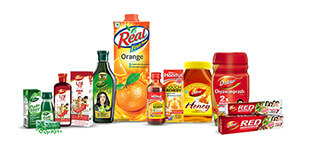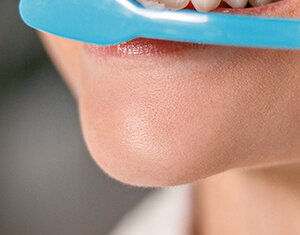Blog
How To Choose The Right Toothpaste For Gingivitis?
Oral Care

If your dentist has told you that you are suffering from gingivitis, don't panic. The reason is there is a high chance of recovery from the condition. Gingivitis is a gum problem marked by red, swollen gums that bleed easily when an individual brushes or floss. It can be easily treated with proper treatment but at the right time. So, let's find out how choosing the best toothpaste for bleeding gums helps you in getting rid of gingivitis.
What Do You Mean by Gingivitis?
Gum disease, known as gingivitis, happens when harmful bacteria collect and transform into plaque at an individual gum line. Although gingivitis can be treated improper treatment can also result in periodontitis, which is a serious type of gum disease.
How to Choose the Toothpaste for Gingivitis?
-
Look for Antigingivitis Formulas
When selecting the best toothpaste for gums like Dabur Meswak, prioritize those specifically formulated for gingivitis. These toothpastes contain active ingredients such as triclosan, fluoride, or stannous fluoride, which help combat bacteria and reduce inflammation in the gums.
-
Check for Fluoride Content
Fluoride is very essential for strengthening tooth enamel and preventing tooth decay. Ensure the toothpaste you choose contains fluoride within the recommended concentration (typically 1000-1500 parts per million) to protect your teeth while addressing gingivitis.
-
Consider Sensitivity
If you have sensitive gums, opt for gum disease toothpaste designed for sensitive teeth and gums. These formulations are gentler and less abrasive, reducing discomfort while effectively treating gingivitis.
-
Avoid Harsh Ingredients
Steer clear of toothpaste containing harsh abrasives or alcohol, as these can exacerbate gum irritation and worsen gingivitis symptoms. Instead, opt for mild, non-irritating formulas that promote healing and soothe inflamed gums.
-
Consult with Your Dentist
Your dentist is your best resource for personalized oral care recommendations. Consult with them to determine the most suitable toothpaste for your specific needs and the severity of your gingivitis.
-
Read Labels Carefully
Pay close attention to the ingredient list on toothpaste packaging. Look for clinically proven ingredients like zinc citrate or essential oils called for their antibacterial properties and effectiveness in combating gingivitis.
-
Consider Additional Benefits
Some toothpaste formulations offer additional benefits beyond gingivitis treatment, such as whitening or tartar control. While these features can be appealing, prioritize the primary goal of managing gingivitis when making your selection.
-
Establish a Routine
Consistency is key to managing gingivitis effectively. Brush your teeth at least twice a day with the chosen toothpaste, ensuring thorough coverage of all tooth surfaces and along the gumline. Pair brushing with daily flossing and regular dental check-ups for optimal oral health.
Types of Toothpaste for Gingivitis
There are several types of toothpaste available on the market that are specifically designed to combat gingivitis. These include:
- Anti-gingivitis toothpaste: These toothpastes contain special ingredients like triclosan such as tea tree oil, which helps in reducing plaque as well as bacteria in the mouth.
- Tartar control toothpaste: As mentioned earlier, tartar control toothpaste helps in preventing the build-up of tartar on your teeth and gum line.
- Sensitivity toothpaste: If you have sensitive teeth, look for toothpaste that contains ingredients, for example, potassium nitrate or strontium chloride, to help reduce sensitivity while brushing.
What Causes Gum Disease?
Prior to discussing how to choose the best toothpaste, it's critical to comprehend the causes of gum disease, the reasons toothpaste isn't a panacea, and the necessity of a comprehensive strategy.
Plaque bacteria cause gingivitis, which can be more common in some people than in others. If left untreated, gingivitis can swiftly develop into periodontitis.
For those who do not know, plaque is simply a sticky layer of bacteria caught in a film called a biofilm that coats the teeth and, in cases of advanced gum disease, extends below the gum line.
The Bottom Line
Choosing the right toothpaste for gingivitis is important in maintaining excellent oral health and preventing more damage to your gums. Remember to look for toothpaste with fluoride, tartar control, antibacterial properties, and FDA approval when shopping. Always consult with the dentist for personalized recommendations and treatment plans. With the right and the best toothpaste and proper oral hygiene habits, you can combat gingivitis and maintain a healthy smile.
FAQs
-
How often should I brush my teeth if I have gingivitis?
It is suggested to brush your teeth at least two times a day for two minutes each time. However, if you have severe gingivitis, your dentist may recommend brushing more frequently.
-
Is mouthwash necessary if I have gingivitis?
Mouthwash can be beneficial in addition to brushing and flossing for gum health, but it is not a substitute for proper oral hygiene.
-
Is natural toothpaste effective for gingivitis?
Some natural toothpaste may contain ingredients that can help combat gingivitis, but it is always best to consult with your dentist before using them.























